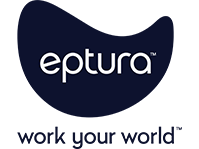
When the facility management team needs active support for new policies, processes, and the digital solutions that support them, the IT team is an obvious partner. However, because facility management shares many similar or closely connected key performance indicators (KPIs) with human resources, it’s important to invest in opportunities for the two departments to help each other achieve shared goals.
How can the facility team work with HR on shared and connected KPIs?
A partnership between the facility management team and HR is essential for creating an environment where employees can thrive. By focusing on shared KPIs, these teams can address a wide range of issues that impact the overall health and productivity of the organization.
Strengthening employee satisfaction and engagement
Employee satisfaction and engagement are critical KPIs that measure how happy and productive employees are in their work environment. High levels of satisfaction and engagement are crucial for maintaining a positive and productive workplace, which can lead to better performance, lower turnover rates, and a more cohesive team dynamic.
HR focuses on employee relations, development, and recognition, implementing programs such as regular performance reviews, career advancement opportunities, and employee recognition awards. For example, HR might organize team-building activities and wellness programs to boost morale, ensuring that employees feel valued and supported in their roles.
The facility management team, on the other hand, directly impacts the physical workspace and amenities, ensuring that the office is comfortable, safe, and equipped with the necessary equipment and resources. This includes improving the office layout to enhance collaboration and reduce stress, ensuring there are comfortable break areas, adequate lighting, and ergonomic furniture. By collaborating and sharing data, HR and facility management can gain a comprehensive understanding of what drives employee satisfaction and engagement. For example, they can share data from employee surveys, feedback on workspace conditions, and metrics on productivity and absenteeism. Sharing information can help identify specific areas for improvement, such as addressing common complaints about the physical environment or tailoring HR programs to better meet the needs of the workforce.
Lowering the absenteeism rate
High absenteeism can indicate issues with the work environment, employee well-being, or job satisfaction. Poor ventilation, inadequate ergonomic setups, and other physical factors can lead to increased sick days.
HR and the facility teams can work together to identify and address these issues, improving overall employee health and reducing operational disruptions. They can share data from attendance records, health surveys, and employee feedback to pinpoint the root causes of absenteeism. For example, HR might analyze patterns in sick leave to identify specific departments or times of the year with higher rates of absenteeism, while the facility team can conduct environmental assessments to check for issues like poor lighting, noise levels, and temperature control. By combining this information, they can implement targeted solutions, such as upgrading ventilation systems, providing ergonomic assessments and equipment, and creating more comfortable and quiet spaces for employees to work. A collaborative approach not only enhances employee well-being but also ensures that the workplace remains efficient and productive.
Reducing employee turnover rate
Employee turnover can be costly and disruptive. Factors like workplace culture, career development opportunities, and the physical environment all play a role in employee retention. In fact, companies with strong workplace cultures, including supportive facilities, experience 56% lower turnover rates.
A negative workplace culture can demotivate employees, while limited career development opportunities can make them feel stuck and unfulfilled. On the other hand, an uncomfortable or unsafe physical environment can lead to dissatisfaction and even health issues, further driving turnover.
By tracking this KPI together, both HR and facility teams can identify areas for improvement and implement strategies to retain talent. They can share data from exit interviews, employee satisfaction surveys, and turnover rates to gain insights into why employees are leaving. For example, HR might uncover that employees are leaving due to a lack of growth opportunities, while the facility team could find that issues like poor lighting or inadequate workspace are contributing to dissatisfaction. By combining this information, they can develop targeted solutions, such as enhancing career development programs or improving the physical workspace, to create a more supportive and attractive work environment.
Increasing space utilization efficiency
Efficient space utilization ensures an organization sees the strongest possible return on its real estate investments, reducing waste and optimizing resource allocation. The facility team manages the physical layout and space allocation, while HR can inform these decisions based on employee needs and headcount. For example, if a team needs to expand but the facility cannot accommodate the growth, it can significantly impact both teams’ ability to function effectively.
By working together, the facility team and HR can ensure that the workspace is not only functional but also conducive to productivity and collaboration. The facility team can conduct regular space audits to identify underutilized areas and adjust, while HR can provide insights into future staffing needs and departmental dynamics. For example, HR might predict an increase in headcount for a particular department, allowing the facility team to plan for necessary expansions or reconfigurations in advance.
Avoiding workplace safety incidents
Both teams play a critical role in maintaining a safe workplace. The facility management team ensures the physical safety of the environment, addressing issues like structural integrity, emergency preparedness, and ergonomic design. HR ensures that employees are aware of and adhere to safety protocols, providing training and reinforcing compliance through regular communications and policies.
Tracking incidents helps identify areas for improvement in both domains, reducing the risk of accidents and promoting a culture of safety and well-being. By analyzing incident reports, both teams can pinpoint specific issues and implement targeted solutions. For example, the team might address a recurring problem with faulty equipment, while HR could enhance training programs to better educate employees about safe practices.
By focusing on these shared KPIs, facility managers and HR teams can collaborate to create a more efficient, healthy, and engaging work environment. This partnership ultimately leads to higher employee satisfaction and productivity, as a safe and well-maintained workplace fosters a sense of security and care, encouraging employees to perform at their best.
An intelligent facility management solution simplifies data capture and sharing
An intelligent facility management solution streamlines the process of capturing and sharing data across departments. By automating data collection, it ensures that all relevant information is accurate and up to date. This enhances transparency and enables seamless collaboration between teams, leading to more informed decision-making and improved operational efficiency.





